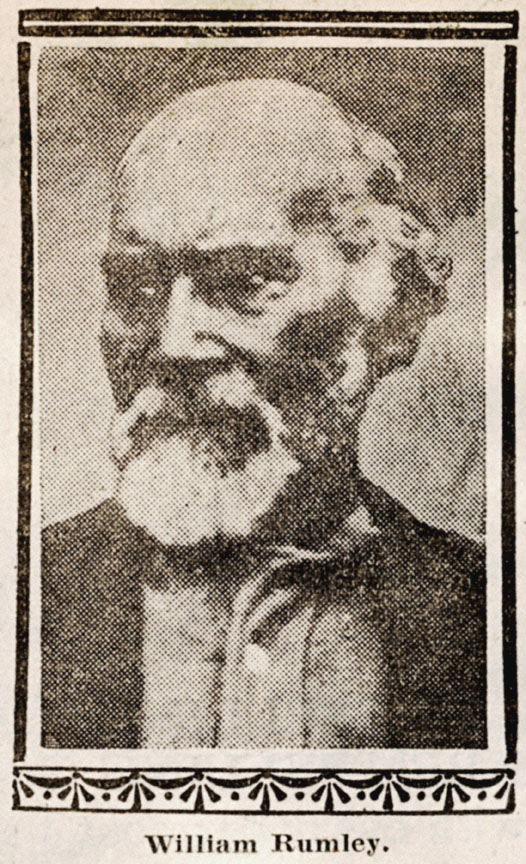- Catalog No. —
- SB 12-23
- Date —
- November 3, 1909
- Era —
- 1881-1920 (Industrialization and Progressive Reform)
- Themes —
- Black History, Oregon Trail and Resettlement, Race, Ethnicity, and Nationality
- Credits —
- Oregon Historical Society
- Regions —
- Southwest
- Author —
- Unknown
William Rumley
This photograph of William Rumley appeared in an unidentified newspaper in November 1909. At the time the photo was taken, Rumley was generally considered to be the oldest living pioneer in Curry County.
William Rumley was born into slavery around 1830—one account says March 15, 1830—in Jefferson City, Missouri. His father was white, his mother Black. He later recounted that he had eleven masters before he escaped at the age of twenty-one. Although there are conflicting accounts in the historical record, he probably accompanied his last master to California around 1850 to search for gold. One 1916 newspaper account says that just before boarding a ship in San Francisco, Rumley claimed to have forgotten his coat, which contained his watch and all of his money. “Go get your vest,” his master told him, “and hurry. The ship will soon be leaving.” Rumley never returned. Instead, he later recounted, he “went up town and got lost.”
Shortly after escaping slavery, Rumley headed north to dig for gold in the Klamath River country. It was here that he met a Karok Indian woman named Lucy, whom he married in 1864. A few years later Rumley and Lucy moved to the Rogue River country, eventually settling down at a place later known as Rumley Hill, located on Squaw Creek near Agness. Rumley is listed in the 1870 census for Curry County as “William A. Rumbey,” a forty-year-old “farmer (negro),” married to “Mrs. Lucy (Indian),” age thirty-two. They are listed as having one child, an eleven-year-old named “Ely McMann (1/2 Indian),” who was born in California.
For more than fifty years Rumley made his living mining, farming, raising stock, and guiding hunting parties in the Rogue River country. He became a pillar of the community soon after moving to Curry County, earning a reputation for kindheartedness and generosity. Historian Kay Atwood notes that “his hospitality was legendary; his help to the sick constant.” He would often visit his sick neighbors when the local doctor was too busy, helping them in any way he could. His wife died around 1880, but Rumley lived on until 1921 or 1922. His passing was mourned by those who knew him. An early resident of the area, Marial Billings Akesson, remembered that “everyone loved Uncle Bill. He had no bad traits. He was a very humble man, and very kind….He was always laughing when I saw him.”
Further Reading:
Atwood, Kay. Illahe: The Story of Settlement in the Rogue River Canyon. Ashland, Oreg., 1978.
Written by Cain Allen, © Oregon Historical Society, 2006.
